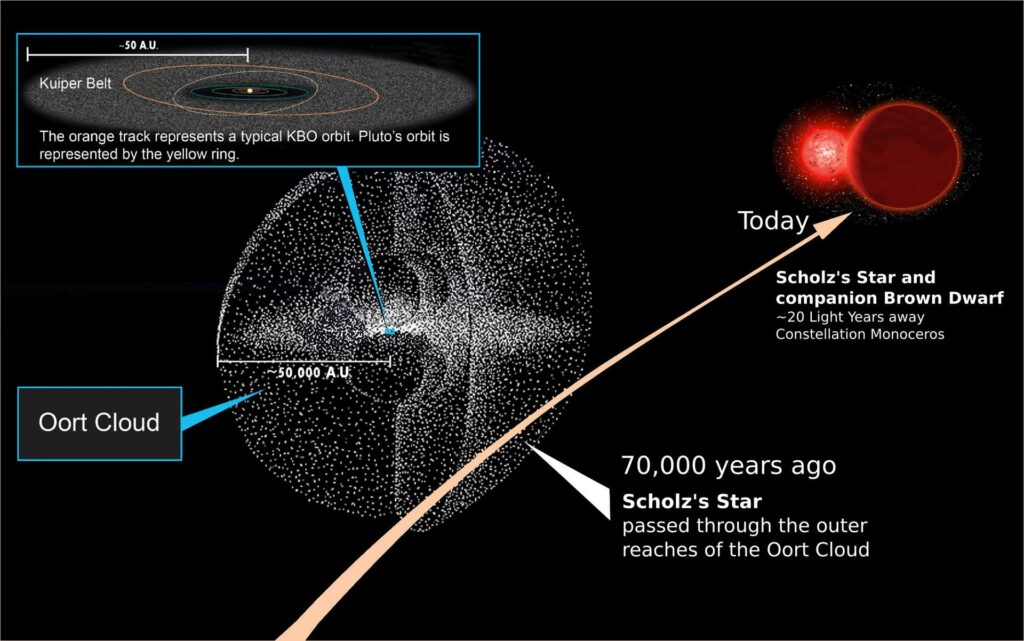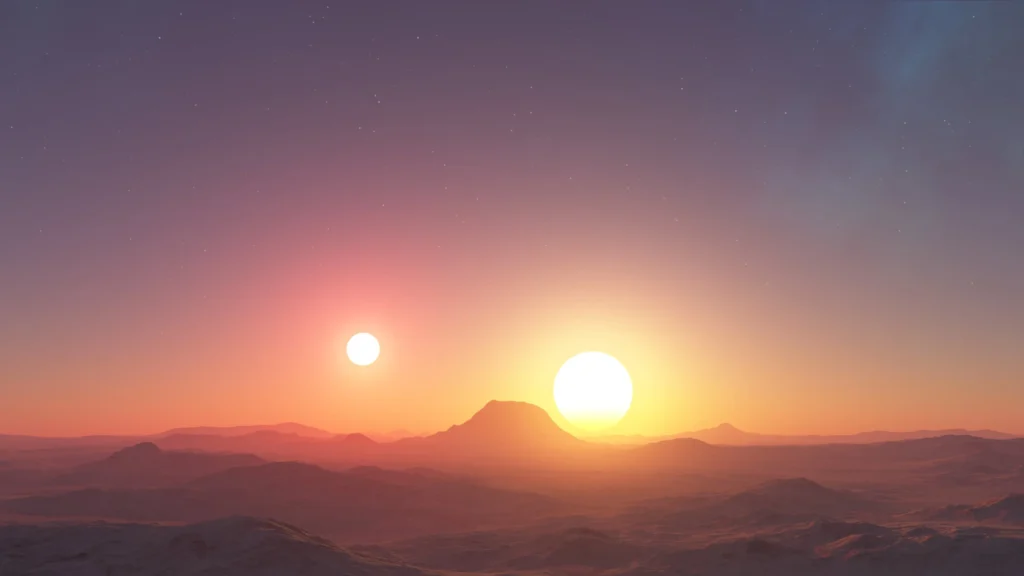Our Sun orbits the centre of the Milky Way, making one orbit around it in about 225 million years. In the process of this movement, it gets closer to other stars from time to time. For example, just 70 thousand years ago there was a meeting of the Solar System and the red dwarf WISE 0720-0846, also known as the Scholz’s Star. The minimum approach distance was one light-year. This is four times less than the distance to Proxima Centauri.

The encounter with Scholz’s Star apparently had no noticeable effect on the Solar System. But what if the flight distance was much smaller? A team of French researchers tried to find an answer to this question. It modelled the scenario of the passage of a star at a distance of 100 AU from the Sun. This is about 2.5 times the distance between the Sun and Pluto. In total, the researchers performed 12 thousand simulations, exploring different options for the speed and trajectory of the star.
According to astronomers, the most likely result is the survival of all eight planets of the Solar System. The probability that no planet will be lost is more than 95%. However, this does not mean that their orbits will remain unchanged. They can be severely disrupted, and some planets (including Earth) can even be thrown into the Oort cloud.

As for the more extreme scenarios, Mercury turns out to be the most vulnerable, which tends to collide with the Sun. Other results include the collision of Earth with Venus, the expulsion of Uranus and Neptune from the Solar System, the survival of Jupiter alone, or even the loss of all eight planets. Theoretically, a star can even capture one or more planets, although the probability of this result is quite small.
The researchers also compiled a table of the ten most likely options for the destruction of planets. It looks like this:
- Mercury collides with the Sun (probability of 2.54%).
- Mars collides with the Sun (probability of 1.21%).
- Venus collides with another planet (1.17%).
- Uranium is ejected (1.06%).
- Neptune is ejected (0.81%).
- Mercury collides with another planet (0.80%).
- Earth collides with another planet (0.48%).
- Saturn is ejected (0.32%).
- Mars collides with another planet (0.27%).
- Earth collides with the Sun (0.24%).
As for the effect of the passage of another star on the Earth’s orbit, it will remain close to the current one in most scenarios. In about 99% of them, our planet will receive as much heat and light from the Sun as before the flyby. In 0.79% of cases, our planet will begin to receive at least 10% more heat, in 0.28% of cases — at least 10% less heat.
Recall that the most likely scenario (more than 95%) is that the Solar System will retain all eight planets. It is also worth considering that the probability of such a close passage of a star within the next billion years is about 1%.
According to https://phys.org
Follow us on Twitter to get the most interesting space news in time
https://twitter.com/ust_magazine


